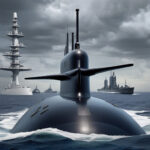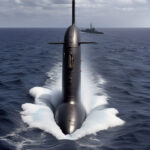China Makes Mini Version of Cosmic Blast in Lab with Shock Waves Reaching 1,118 mps
For many years, scientists have been trying to understand cosmic rays—tiny, fast-moving particles that stream through space, bombarding the Earth from all directions. These cosmic rays carry an immense amount of energy and play a crucial role in shaping the universe as we know it. However, studying these elusive particles has proven to be a significant challenge due to their high energy levels and the limitations of Earth-bound laboratories.
In a groundbreaking development, a team of researchers in China has managed to create a miniaturized version of a cosmic blast in a laboratory setting. By generating shock waves that reach speeds of up to 1,118 meters per second, the scientists have successfully replicated the high-energy conditions associated with cosmic rays. This remarkable achievement opens up new possibilities for studying these mysterious particles in a controlled environment.
The experiment, conducted at the Institute of Fluid Physics in China, involved the use of a state-of-the-art shock tube to generate the high-speed shock waves. By carefully calibrating the parameters of the experiment, the researchers were able to recreate the extreme conditions that cosmic rays experience as they travel through space. The resulting shock waves not only reached speeds comparable to those of cosmic rays but also mimicked their impact on surrounding materials.
One of the key insights gained from this experiment is the effect of shock waves on different types of substances. By observing how the shock waves interacted with various materials in the lab, the researchers were able to gain valuable information about the behavior of cosmic rays when they collide with celestial bodies. This knowledge is essential for understanding the impact of cosmic rays on the Earth’s atmosphere and magnetic field.
Moreover, the ability to replicate cosmic blasts in the lab opens up new avenues for research in astrophysics and particle physics. Scientists can now conduct experiments to study the interactions between cosmic rays and matter in a controlled environment, providing valuable data that can enhance our understanding of the universe. This breakthrough could lead to new discoveries in fields such as high-energy astrophysics, cosmic ray physics, and space weather research.
The implications of this research extend beyond the realm of pure science. By shedding light on the behavior of cosmic rays, scientists can better assess the potential risks they pose to space exploration and satellite technology. Cosmic rays can interfere with electronic equipment and pose health risks to astronauts, making it crucial to develop effective shielding strategies for long-duration space missions.
In conclusion, China’s successful recreation of a mini cosmic blast in the lab represents a significant milestone in the study of cosmic rays. By harnessing the power of shock waves, researchers have unlocked new opportunities to unravel the mysteries of these high-energy particles and their impact on the universe. This pioneering research not only advances our scientific knowledge but also paves the way for innovations in space exploration and technology.
cosmic rays, astrophysics, particle physics, space exploration, laboratory research










